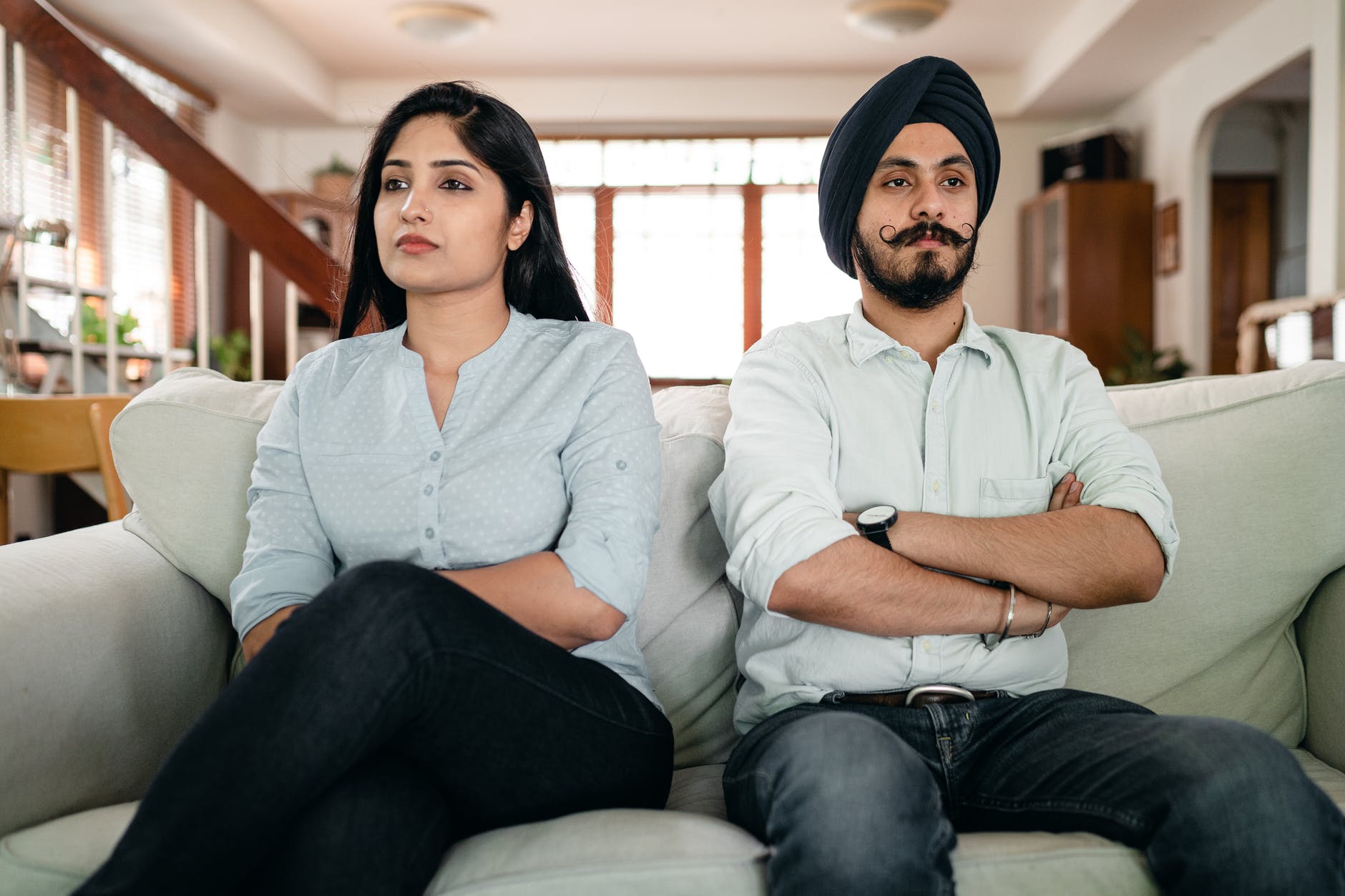Table of contents-
In India and other countries, Divorce is something big people become curious about. They have many questions regarding divorce like what things it involves, how people proceed with this, what circumstances make a couple of files a divorce, what difficulties they have to go through, and so on. So in this article, we would be talking about this topic.
A divorce is a legal action between a married couples to terminate their marriage relationship or we can say it is a formal ending of a marriage. This generally happens when husband and wife decide not to live together or they no longer want to be married to each other. There could be many reasons for divorce like Infedility, money problems, addictions, extraordinary situations, incompatibility, irreconcilable differences etc.
Divorce laws differ around the world but if we talk about major countries so in many countries divorce requires the sanction of a court or any other authority in this legal process, which may also involve various issues like distribution of property, child custody, alimony, parenting time, child support, division of debt etc. Divorce is different from annulment which declares the marriage null and void with legal separation. Therefore, Divorce and separation are two “different things”.
Since India is a secular country and here wide number of religions are freely practised. Also there are major religions practised which includes Hinduism, Islam and Christianity. In these religions marriages are in accordance with their religious rituals and ceremonies. Therefore, the matrimonial laws in India are essentially governed by personal laws depending on their religion.
Different Acts were made for this legal process in India-
For Hindus: Hindu Marriage Act 1955
For Muslims: Muslim’s marriages are a contract comes under Muslim law.
For Christians: Indian Marriage Act 1872 and the Divorce Act 1869
For Parsis: Parsi Marriage and Divorce Act 1936
All the above laws are applied throughout India.

Types of Divorce in India
Mutual Consent
When both the partners are not compatible with each other, and they decide for their good to dissolve their marriage relationship, here a mutual consent divorce can be obtained under section 13-B of the Hindu Marriage Act for Hindus, Sikhs, Jaina and Buddhists.
Although this procedure is easier than contested divorce as it is a legal process so it consumes time. If we talk about the time duration it takes, so after including all processes like counselling, settlement, documentation and two motions it may consume about 7 months in this whole process.
Legal requirements for mutual divorce consent-
- The couple must have been married for at least 1 year
- The couple must be living separately for at least 1 year
- The couple is unable to live together
- The couple has reached the consensus to get divorced
Contest Divorce in India
A contested divorce in India could also be known as a one-sided divorce. A divorce petition is filed by one spouse against the other and the other spouse contests before the court. It is a formal way of filing a divorce, it is generally exercised when mutual consent divorce is not possible.
In a contested divorce the process is longer than mutual divorce, the period may range from 3-5 years due to the complications and possibilities either party can challenge the decision in the court.
Contested Divorce has different stages
- Meeting with an Adviser
- Either spouse files a petition
- Appearance and Reconciliation
- Counter reply from the other spouse
- Discovery
- Settlement
- Trial
- Orders
- Appeal
Process of divorce
In Mutual Consent Divorce in India
- Joint filing of divorce petition involves in the first motion
- After filing the petition both husband and wife appear before the court to record their statements
- The court examines petitions, documents, record statements etc and after examining these court will pass on the order for the recording of statements on a vow
- On the first motion, the court passes its order
- A Cooling-off period is given by the court for six months so the couple so that could rethink their decisions
- Within 18 months of the First motion filing of second motion can be done
- Decree of divorce passed by the court in the final hearing
In Contested Divorce in India
- A petition is filed by either husband or wife stating all the facts and grounds for seeking a divorce
- After the court gets satisfied it decides to send a notice or summons the other party in the court and seeks a reply from the other spouse
- The court may suggest reconciliation and if it fails the court will continue with the process
- Both the parties will appear before the court on a fixed date, examination and cross-examination of witnesses and evidence will be done if any
- Counsels from both parties will present their final arguments in the court
- Decree of divorce passed by the court in the final earshot
Divorce under Muslim Law
There are two processes to seek a divorce in India under Muslim law-
Judicial Process (The dissolution of Muslim Marriages Act, 1939)
Under this process, Muslim women can seek divorce on the following grounds-
- Husband’s whereabouts have not been known for at least 4 years
- Husband failed to provide maintenance for at least 2 years
- Husband has been sentenced to imprisonment for at least 7 years
- Without any reasonable cause, the husband failed to comply with his marital obligations for at least 3 years
- The Husband treated his wife with brutality
- The husband was impotent, suffering through venereal illness or he is of unsound mind for at least 2 years
Extra-Judicial Process
- Talaq-i-ahasan: Under this process, the husband needs to pronounce talaq orally ‘only once’ during the period of the tuhr
- Talaq-e-sunnat:
- Talaq-i-hasan: Under this process the husband needs to pronounce ‘talaq’ 3 times during 3 successive period of this. Also, there should not be any sexual intercourse during these periods.
- Ila: The husband takes an oath that he will not have any sexual intercourse with his wife for four months, and after the four months the marriage will be dissolved.
- Talaq-i-Tafweez: Also known as delegated divorce, under this the husband delegates his authority permanently or temporarily to his wife
- Lian: If the wife has been charged falsely with adultery then she gets entitled to seek a divorce
- Khula(Divorce by mutual consent): If the wife agrees to give consideration to her husband to free her from the marriage, then it is considered as mutual divorce. It is the will of the wife.
- Mubarat: If both husband and wife don’t want to continue their marriage, so the divorce can be filed by either of them and if the other spouse accepts then the marriage gets dissolved.
Talaq-e-Biddat or triple talaq is not a valid divorce anymore. Under section 3 of The Muslim Women Act, 2019 triple talaq is considered as void and illegal. Triple talaq whether oral or written in any electronic form will be considered an illegal and non-bailable offence under this act.
Indian Divorce Act 1869
Indian Divorce Act 1869, this act came into existence on April 1, 1869. It applies to the entire country but the state of Jammu&Kashmir. It is one of the fewest Indian personal laws governing Christians. Since many laws have been made and applies differently to all religions, the Indian Divorce Act is also important as it affects the Christian community.
This Act mainly contains provisions like defining powers of courts, grounds for dissolution of marriages, custody issues, etc. It only applies to the people who belong to the Christian religion and should be residents of India only.
Grounds for dissolution of marriage
The husband or wife must file a petition before the District court. Section 10 of the Indian Divorce Act contains grounds on which the court may dissolve a marriage.
Following grounds
- When either of the parties commits infidelity
- If a party belongs to the Christian religion
- If either of the party is of unsound mind for 2 years
- If either of the party is suffering from venereal disease
- If either of the party has deserted the spouse for 2 years
- If either of the party is treating the spouse with cruelty
Divorce by mutual consent
Under Section-10 A, if both the husband and wife mutually agree to seek divorce then they can file a petition. For this purpose only the Parliament of India amended this Act to insert Section-10 A. Parties may file a petition for divorce in the District court. In order to file a divorce, they must have fulfilled all the above-mentioned grounds. The court may dissolve their marriage if the parties do not withdraw their petition.
Divorce Lawyer
Lawyers are sometimes displayed as stirring up domestic conflicts to build a fee. At best the lawyer is regarded as a necessary asset, in view of the increasing number of people involved in divorce the role of the lawyer is also increasing.
As the lawyer helps you best in all the consequences relating to a property, marriages/relationships, child custody etc., which cannot be handled by any one of us other than the lawyer. For divorce processes approaching an attorney is the best way.
Moreover, a divorce lawyer can serve as the go-between for you and your spouse. One can avoid personal contact to help make them easier to get through.
A lawyer helps to get divorce in India in many ways-
- Accounting for marital assets
- Illustrate property division
- Formulating a debt repayment plan
- Determining spousal support and other privileges
- Helping with custody plans
- Preparation with divorce papers
- Negotiating a settlement
- Representing in the court
You can contact an advocate for legal advice for a divorce case in India.

If you need legal advice to win a consumer case in consumer court then Talk to a lawyer now!




